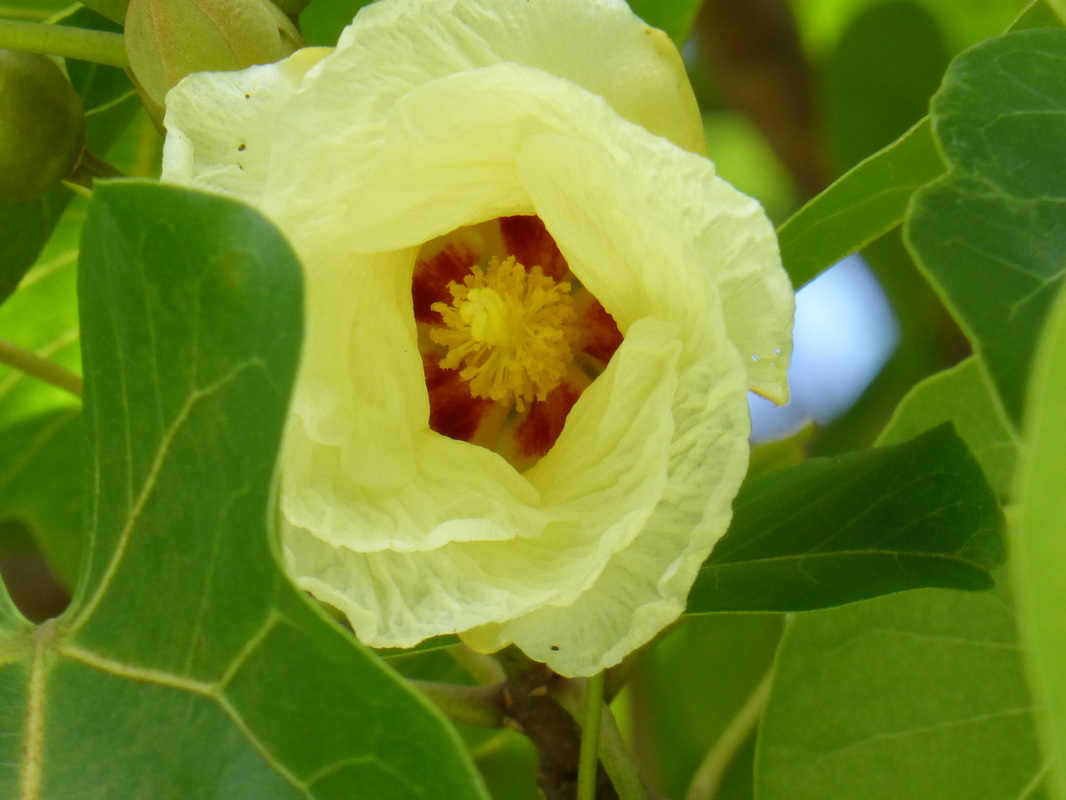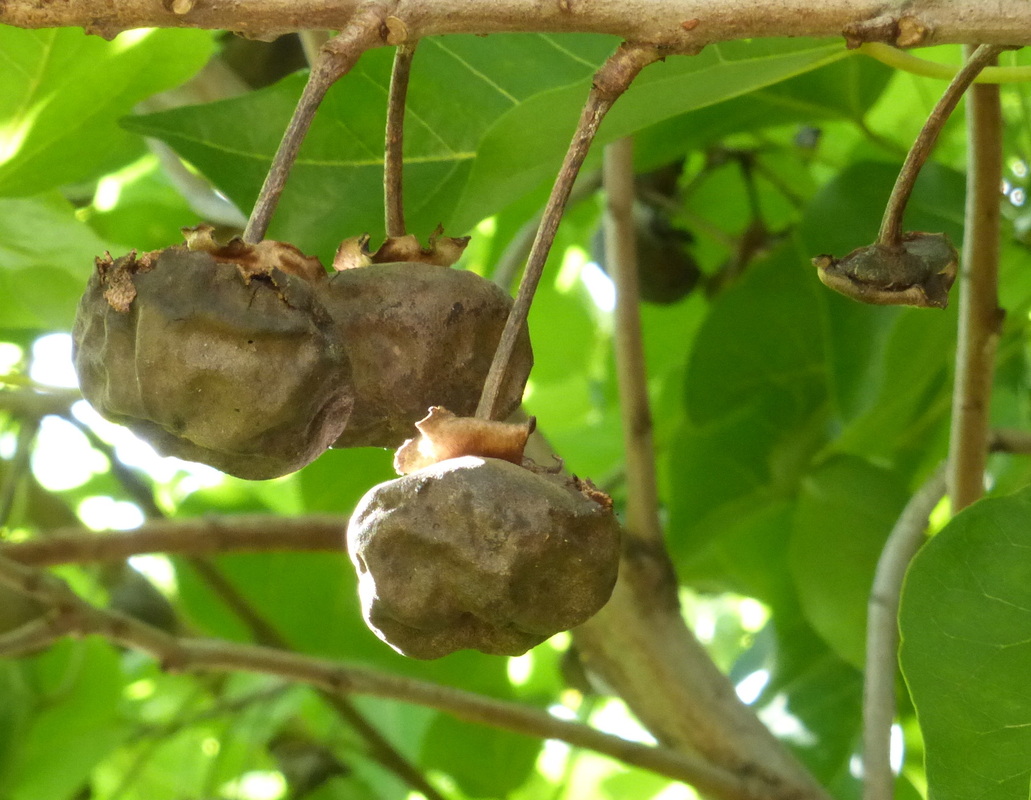 |
| The trimmed Milo tree that we held with little regard until manager Mike told me its story. |
Yesterday morning, as I wandered the area looking for interesting vegetation, I was particularly curious as to the trees that often appear in our photos when we take shots of the ocean from our lanai.
Originally, their recently trimmed appearance was somewhat of an eyesore in our photos. More than once, I maneuvered the camera in such a way to ensure they weren’t included in the photo.
 |
| Another trimmed Milo tree on the grounds. |
Now, I feel a little foolish after meeting Mike, the property manager here at Milowai, our condo complex, explained this building was named after these interesting trees, “Milo,” after the Milo tree, with the “wai” meaning “water,” tree by the water.
Mike explained they are a hearty tree with a major significance to the Hawaiian people as indicated in this quote below from this website.
“There are those who say that the beautifully grained milo wood utensils, furnishings, and jewelry were only for the chiefs of ancient Hawai`i. It is told that the Waikiki home of Kamehameha I was surrounded by milo trees.
 |
| Beautiful flowers that bloom on the Milo tree. (Not our photo). |
 |
| The flowers as shown above bloom only for one day, later becoming these seed pods from which eight seeds are eventually released. (Not our photo). |
Mike also explained that the Milo tree does well growing near the sea and is unaffected by the salt from the sea which is very close to the Milo trees on the grounds here at Milowai.
I was also curious as to the type of grass on the lawn here. It is so perfect, it almost appears as if it isn’t real. But, it is real. It’s called South Coast from which a fake turf is actually named. It too, like the Milo tree, suffers no ill effects from its close proximity to the salt from the ocean.
 |
| The carpet-like lawn at Milowai. |
It’s ironic how we’ve dismissed this odd-looking trimmed tree to discover that in fact, it has its own story to tell, profound in the history of the Hawaiian Islands and its people. Now, we look at it with new eyes and interest. Going forward, we’ll make no effort to exclude it from our photos.
Sorry, Milo.
Photo from one year ago today, November 15, 2013:
 |
| This was the tiny freezer in Kenya. On this date a year ago, when we were leaving on December 1st, we assessed our food on hand to use in the remaining 16 days until we left for South Africa. And here we are now, assessing the food we have left for our departure date once again on December 1st before we leave for the Big Island. For details from that date, please click here. |

